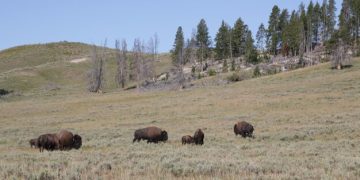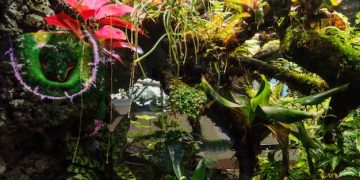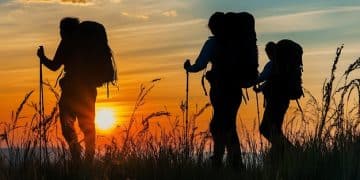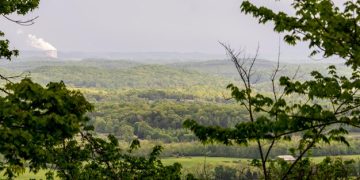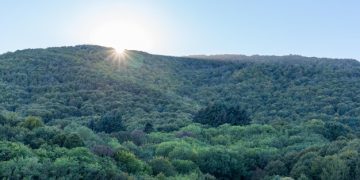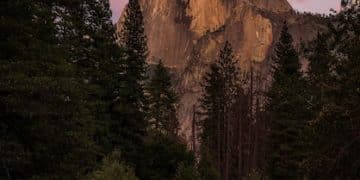Drone Regulations in National Parks: What’s New and How It Affects You
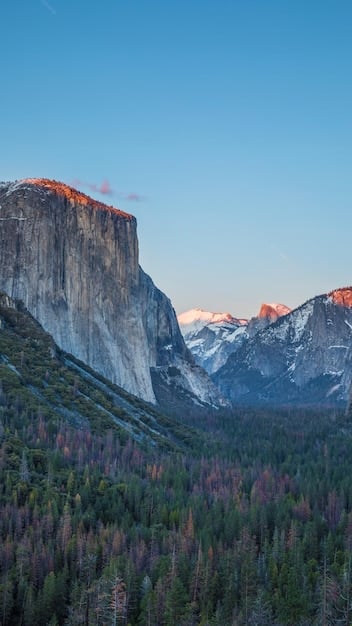
The updated regulations for drone use in US National Parks primarily focus on protecting natural resources, minimizing disturbance to wildlife and visitors, and ensuring public safety, restricting drone operations to designated areas and requiring permits for specific activities.
What are the New Regulations for Drone Use in National Parks and How Will They Affect You? The evolving landscape of drone technology has led to revised guidelines within US National Parks. Understanding these regulations is crucial for drone enthusiasts looking to capture stunning aerial views while respecting the environment and park guidelines.
Understanding the Drone Landscape in National Parks
National Parks have always been havens for nature lovers, photographers, and adventurers. With the rise of drone technology, these parks have become even more accessible. However, this increased accessibility brings the need for regulations to ensure enjoyment for all and protection of the parks’ natural beauty.
Let’s delve deeper into the current drone policies in the US National Parks.
The Initial Drone Ban and its Implications
Initially, there was a blanket ban on drone use in National Parks. This ban, implemented in 2014, was a response to growing concerns about noise pollution, disturbance to wildlife, and safety issues.
- Protection of Natural Resources: The primary goal was to prevent any damage to the fragile ecosystems within the parks.
- Wildlife Disturbance: The ban aimed to minimize any disruption to the natural behavior of animals.
- Visitor Experience: Ensuring a serene and enjoyable experience for all park visitors was a key consideration.
This ban highlighted the need for clear guidelines and regulations. It set the stage for the development of more nuanced drone policies.
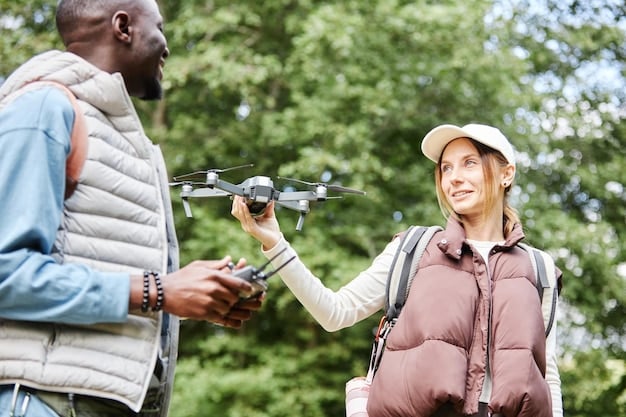
Overview of the New Drone Regulations
The new drone regulations mark a shift towards a more balanced approach. While the general drone ban remains in effect, there are now possibilities for authorized drone operations under specific circumstances.
Here are the key components of these regulations:
Permit Requirements for Drone Operations
Under the new regulations, drone flights are allowed only with a permit. This permit system ensures that all drone operations align with the park’s goals for conservation and visitor experience.
- Scientific Research: Drones can be used for scientific research, such as monitoring wildlife populations or studying geological features.
- Search and Rescue: Drones can be deployed in search and rescue operations to locate missing persons.
- Filming Permits: Commercial filming may be permitted if it meets specific criteria and does not disrupt park resources or visitors.
These permits are subject to strict conditions and require thorough planning and approval.
Areas Where Drone Flights May Be Permitted
While most areas within National Parks remain off-limits for drones, the new regulations carve out some exceptions. Certain designated areas may be approved for drone use under specific conditions.
The specific guidelines can vary from park to park.
Designated Take-off and Landing Zones
Most parks will have designated take-off and landing zones for permitted drone flights. These zones are located away from sensitive areas and high-traffic visitor spots.
- Pre-approved Locations: These zones are carefully selected to minimize environmental impact.
- Limited Access: Access to these zones might be restricted based on time of day or season.
- Safety Protocols: Pilots must adhere to strict safety protocols when operating in these areas.
It is pertinent to check with each park’s official website or visitor center for specific information.
How the Regulations Impact Drone Users
The new regulations inevitably affect drone users, requiring them to adjust their expectations and operating procedures. Understanding these impacts is crucial for compliant and responsible drone flying.
Understanding the restrictions is key:
Restrictions and Limitations for Recreational Use
Recreational drone use is severely restricted under the new regulations. Casual drone flying for personal enjoyment is generally prohibited.
Commercial pilots must be aware of the restrictions as well:
- Altitude Restrictions: Maximum flight altitudes are often restricted to avoid interference with other aircraft or to protect wildlife.
- No-Fly Zones: Areas near sensitive habitats, historical sites, or visitor centers are typically designated as no-fly zones.
- Time of Day Restrictions: Some parks may restrict drone flights to specific times of the day to minimize disturbance.
Compliance ensures the sustainability of this hobby in these parks.
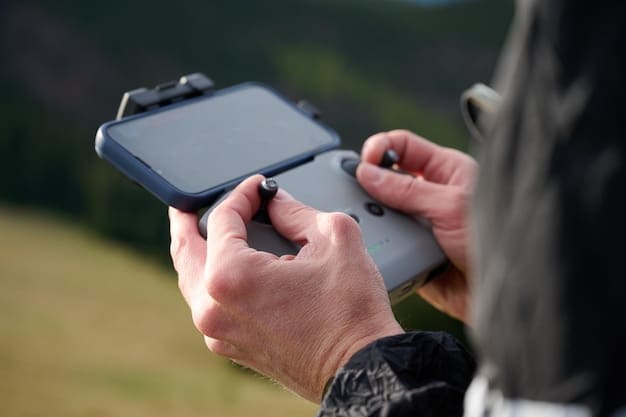
Enforcement and Penalties
To ensure compliance with the new regulations, National Park authorities have implemented various enforcement measures. Violators face significant penalties, reinforcing the seriousness of these rules.
Enforcement promotes respectful drone use.
Consequences of Violating Drone Regulations
Violating drone regulations can result in hefty fines, confiscation of equipment, and even criminal charges. The severity of the penalty depends on the nature and extent of the violation.
- Fines: Fines can range from hundreds to thousands of dollars, depending on the park and the specific violation.
- Equipment Confiscation: Park rangers have the authority to confiscate drones and related equipment used in violation of the regulations.
- Criminal Charges: In serious cases, such as reckless endangerment or intentional harm to wildlife, violators may face criminal charges.
Education plays a vital role in upholding these rules.
Tips for Responsible Drone Use in National Parks
While navigating the new drone regulations might seem daunting, responsible drone use is possible. By following best practices and staying informed, drone enthusiasts can contribute to the preservation of National Parks.
Responsible drone use protects wildlife, habitats, and visitor experiences.
Staying Informed About Park-Specific Regulations
Each National Park may have its own specific regulations and guidelines for drone use. It is crucial to check the park’s official website or visitor center for the latest information.
Check official resources:
- Park Websites: Park websites often provide detailed information about drone regulations, permit requirements, and designated flying areas.
- Visitor Centers: Park visitor centers are staffed with knowledgeable rangers who can answer questions and provide guidance.
- Online Forums: Online forums and social media groups dedicated to drone flying can be valuable sources of information, but always verify the accuracy of the information with official sources.
Compliance is paramount for all drone pilots.
| Key Point | Brief Description |
|---|---|
| 🚫 General Ban | Drones are generally banned in US National Parks to protect resources and visitors. |
| 📝 Permit Required | Drone flights are only allowed with a permit for specific purposes like research or filming. |
| 📍 Designated Zones | Some parks may have designated take-off and landing zones for authorized drone flights. |
| ⚠️ Penalties | Violating drone regulations can result in fines, equipment confiscation, and criminal charges. |
Frequently Asked Questions
Generally, yes, drones are banned. However, some parks may issue permits for specific purposes like scientific research, search and rescue, or commercial filming if it doesn’t disrupt the environment or other visitors.
Activities such as scientific research to study wildlife, geological surveys, or commercial filming projects often require a permit to operate drones within a National Park. These must adhere to strict guidelines.
Flying a drone without permission can result in fines, confiscation of your drone, and even criminal charges depending on the severity of the violation and the specific policies of the National Park you are in.
The best way to find out specific drone regulations is by visiting the official website for that National Park or contacting the park’s visitor center directly. Regulations can differ between parks and can change over time.
Even if the drone footage was captured outside park boundaries, using it for commercial purposes within the park might still require permissions or permits. Contact park authorities to ensure you’re in compliance with all regulations.
Conclusion
Navigating the updated drone regulations in US National Parks requires diligence and respect for the environment. By staying informed, obtaining necessary permits, and adhering to responsible flying practices, drone enthusiasts can continue to capture the stunning beauty of these natural wonders while minimizing their impact on the parks and their visitors.
